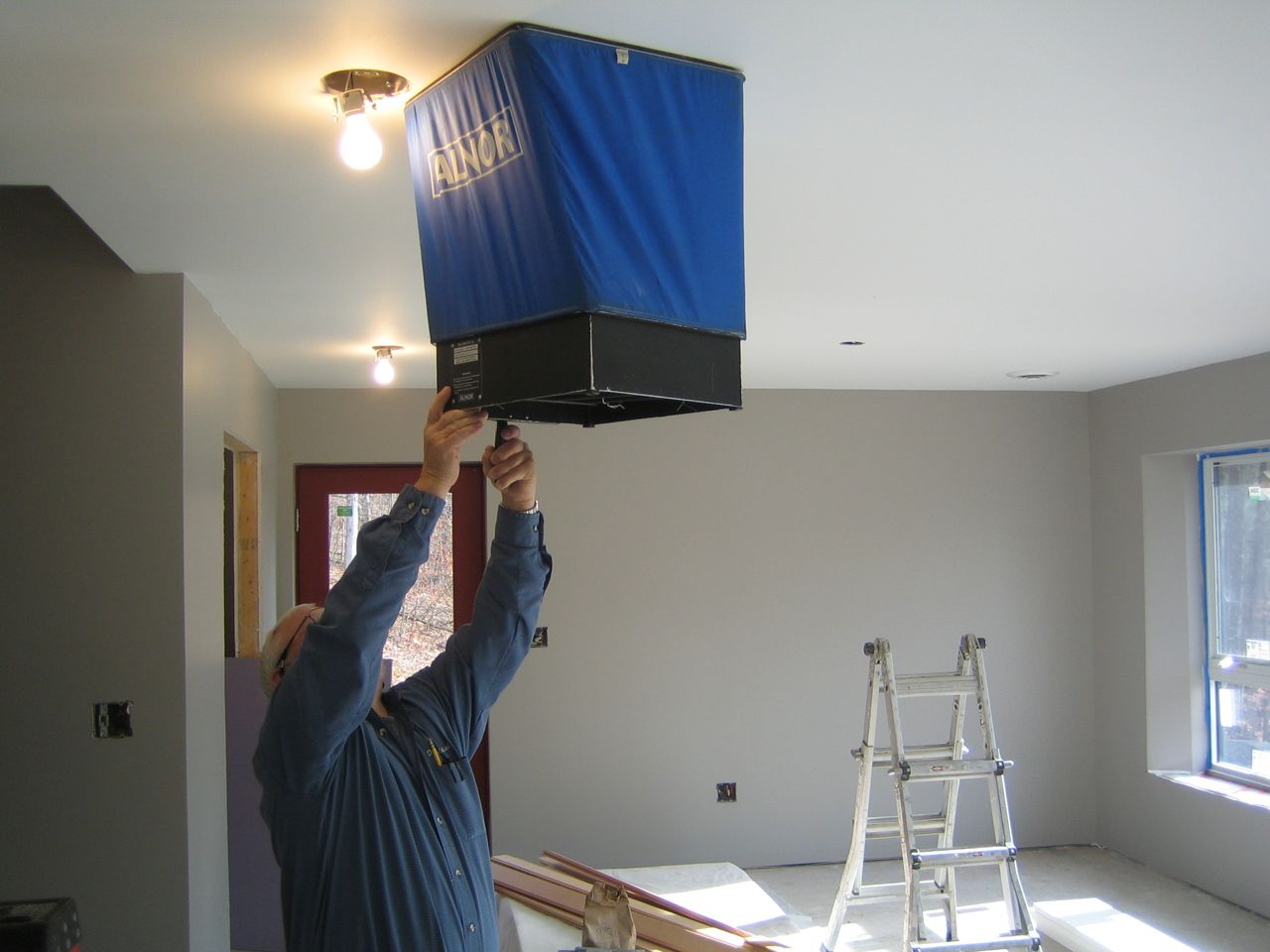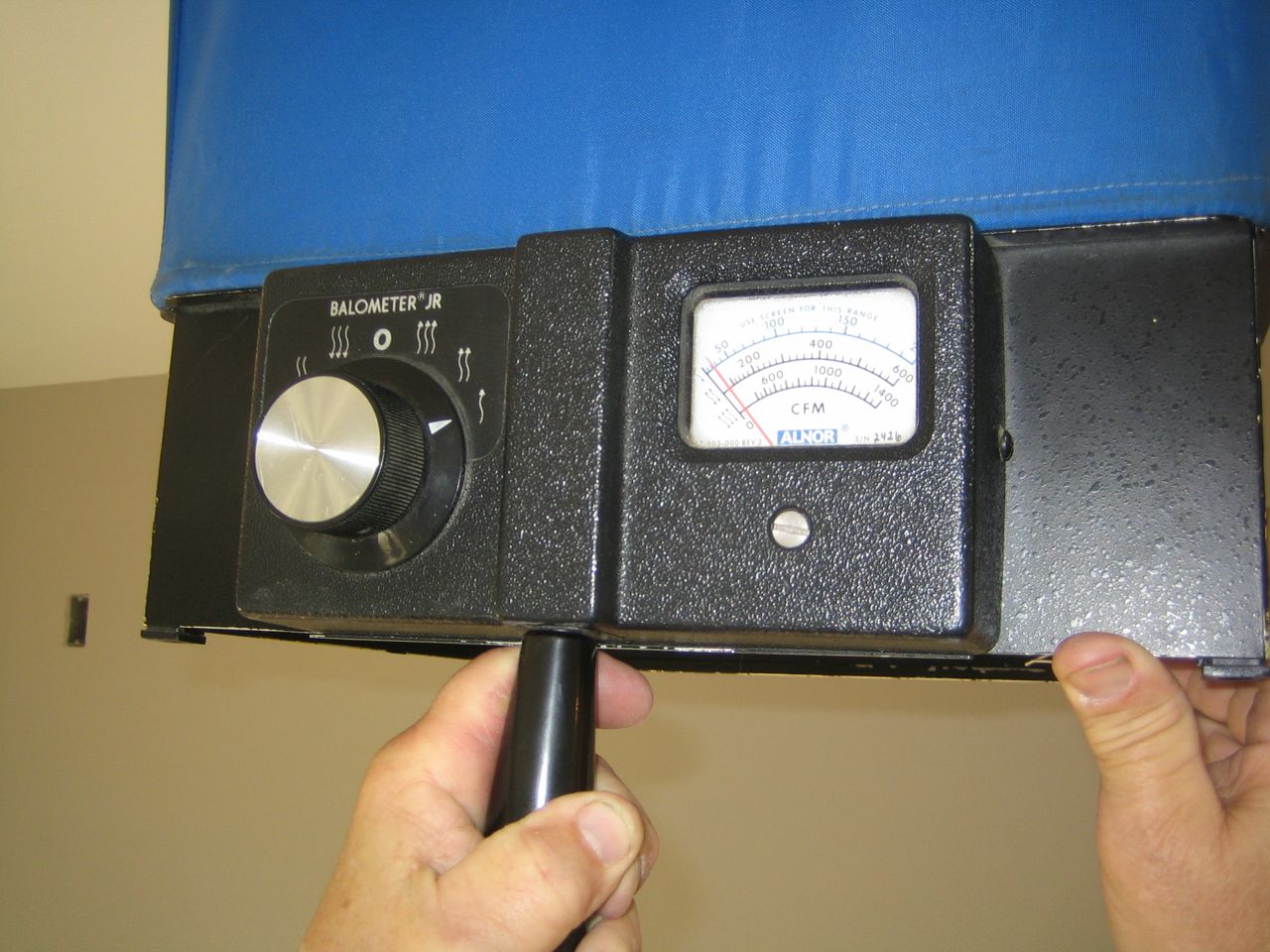ERV install complete
Today Dee’s Electric completed the install of our Energy Recovery Ventilator (ERV). They installed two boost timer switches, one in the kitchen and one in the bathroom. This allows us to run the ventilator on high for a set period of time, while showering or cooking. There’s also a main dial switch that controls the speed of the fan, ranging from off to high.
Part of the commissioning process involves adjusting the airflow at each register to ensure the proper amount of air is being supplied and removed from each space. This also balances the system to ensure the same amount of air is introduced and removed from the house, so there is no pressurization or depressurization of the house.
They did this by first measuring the actual airflow at each register, then comparing that with the required airflow at that register. The required airflow at each register was determined by our energy consultants. The measuring is a bit like the blower door test, except the fan is the ventilator itself. The device measures airflow at the register in cubic feet per minute (CFM).
Since each register is a different distance from the ventilator with a different number of turns and elbows, it requires a little math and a few iterations of adjustments to get everything working as designed. Each vent outlet has an adjustable mechanism to control the amount of air flowing through that register.
After all was complete I ran the ventilator at different speeds and walked around the house to see what the noise levels were like. I could feel no vibration from the unit at all in the house. When the unit was running on the low setting I could barely hear the air movement. The air movement was very noticeable running on high, like in a house with a central air conditioned system. Medium speed was somewhere in between.
In practice, we will be running the unit continuously on low whenever the windows and doors are closed, and on high only for short periods of time when we’re cooking or showering.
That completes the installation of our mechanical systems. Next is finishing the electrical and plumbing. Tomorrow we’re taking a trip down to Ikea to buy our kitchen. And if the humidity in the house levels off tomorrow, we may get to start installing the wood floor this weekend.

Categories
- Air sealing 13
- Appliances & Fixtures 4
- Art 3
- Award 4
- Bathroom 8
- Batteries 1
- Decor 5
- Design 10
- Electrical 5
- Energy Calculations 13
- Energy Monitors 4
- Farm 1
- Finance 1
- Flooring 3
- Foundation 9
- Framing 8
- Heating 9
- House 7
- Insulation 8
- Kitchen 6
- Landscaping 3
- Lessons Learned 1
- Performance 60
- Plumbing 10
- Porch 5
- Radon 1
- Rainwater catchment 3
- Research / study 1
- Roof 7
- Septic / Waste water 2
- Sheetrock 6
- Siding 9
- Site Work 22
- Smart home 1
- Solar 64
- Solar Obsessed 10
- Stairs 2
- Surveying 3
- Ventilation 8
- Weather 1
- Windows & Doors 14
- plug-in 3
Archive
- Jan 2021 1
- Dec 2020 2
- May 2020 1
- Jan 2020 1
- May 2019 1
- Jan 2019 3
- Sep 2018 2
- Aug 2018 2
- Jan 2018 1
- Oct 2017 2
- Apr 2017 1
- Jan 2017 1
- Oct 2016 2
- Aug 2016 1
- Apr 2016 2
- Jan 2016 2
- Nov 2015 2
- Oct 2015 1
- Jul 2015 1
- May 2015 1
- Apr 2015 1
- Jan 2015 1
- Dec 2014 1
- Nov 2014 2
- Oct 2014 4
- Sep 2014 2
- Aug 2014 1
- Jul 2014 1
- Mar 2014 3
- Feb 2014 2
- Jan 2014 2
- Nov 2013 1
- Oct 2013 1
- Sep 2013 1
- Jul 2013 3
- Apr 2013 3
- Jan 2013 3
- Dec 2012 2
- Nov 2012 3
- Oct 2012 1
- Sep 2012 3
- Aug 2012 3
- Jul 2012 2
- Jun 2012 1
- May 2012 3
- Apr 2012 2
- Mar 2012 4
- Feb 2012 4
- Jan 2012 5
- Dec 2011 4
- Nov 2011 9
- Oct 2011 10
- Sep 2011 9
- Aug 2011 6
- Jul 2011 6
- Jun 2011 12
- May 2011 8
- Apr 2011 4
- Mar 2011 5
- Jan 2011 6
- Dec 2010 9
- Nov 2010 3
- Oct 2010 4
- Sep 2010 6
- Aug 2010 8
- Jul 2010 6
- Jun 2010 3
- May 2010 3
- Apr 2010 1
- Mar 2010 3
- Feb 2010 3
- Dec 2009 1
- Jun 2009 1
- May 2009 1
- Feb 2009 1
- Dec 2008 1
- Nov 2008 1
- Jun 2008 1


